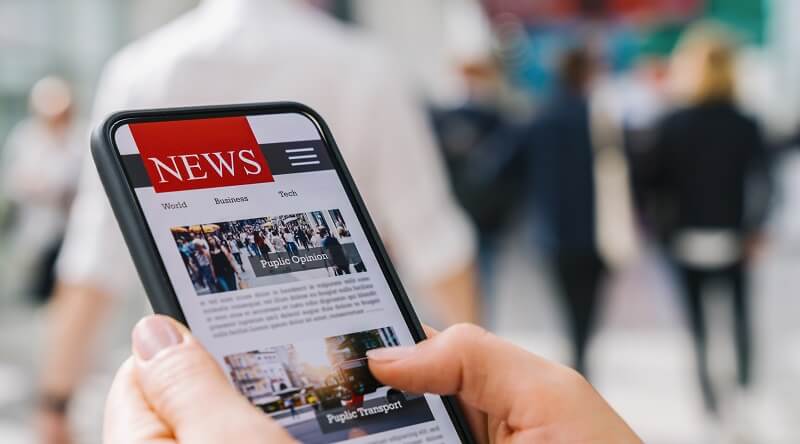A Biased View of Popular News
A Biased View of Popular News
Blog Article
See This Report on Popular News
Table of Contents6 Easy Facts About Popular News ExplainedLittle Known Questions About Popular News.The 25-Second Trick For Popular NewsSome Known Facts About Popular News.
Age is likewise a consider the way people view the duty of social networks. Younger social networks news customers are most likely to claim it has actually affected their understanding for the better. Regarding half of social networks information customers ages 18 to 29 (48%) state news on social media makes them far better informed, contrasted with 37% of those 30 to 49, 28% of those 50 to 64, and 27% of those 65 and older.Reporters consider information worths when determining whether or not to cover an occasion or news. Here are the worths that we think about when establishing an outreach method. Perhaps the most important aspect of newsworthiness is whether the story being connected influences a news electrical outlet's audience. Allow's imagine scientists have actually discovered an economical solution to an usual trouble.
Proximity is essential. Journalists want things that impact their neighborhoods. As an example, research on a state's brand-new tax obligation code likely won't create the exact same rate of interest throughout state borders. Occasionally specialists can aid center a larger national tale that affects greater than simply a city or state. In these instances, it is important to be looking for possibilities where topic experts can provide understanding or where comparable tasks might be occurring in your area.
If you are releasing relevant study, loophole in MarComm prior to the post being published to make sure that the pitch can highlight the most recent aspect of the story: the magazine of the research study. Occasions and announcements that entail top-level figures are more likely to generate media insurance coverage. Check outs from national figures typically require months of prep work because of expected neighborhood passion.
Get This Report about Popular News
Human rate of interest elements can include news value to other tales that might appear to be doing not have in the various other values. The novelty or peculiarity of a circumstance can help influence whether a news electrical outlet is likely to cover a story. While this is not an extensive list, checking to see if your information item or occasion has these top qualities prior to calling us will certainly assist you identify which elements hold one of the most information value.

How Popular News can Save You Time, Stress, and Money.
There is likewise significant proof that even more consumers could begin to pay for information in the futureif authors check that can understand them and serve them well. Half of those who do not spend for news actively seek information and look like clients in various means. Popular News. And nearly 2 in 10 of those that do not subscribe to news now suggest they are inclined to start to pay in the future
We then ask a collection of inquiries to determine whether people spend for specific kinds of news sources. We asked people to name the sources they use most oftenwhether they pay for them or nothow they utilize them, the certain points they think about crucial about them, and some related questions concerning the cost and value of that resource.
Individuals are drawn to news in general for two reasons above others: A wish to be informed citizens (newspaper customers in specific are extremely encouraged by this) and since the magazine they subscribe to excels at covering particular subjects about which those subscribers especially care. While there are a host of factors, the No.
Greater than 4 in 10 likewise mention the truth that pals and family members sign up for the same product. Greater than a 3rd of individuals state they originally subscribed in response to a discount rate or promo. In print, individuals additionally are relocated heavily to sign up for get vouchers that conserve them money, something that has untapped effects in electronic.
The 5-Minute Rule for Popular News

We asked every person that informed us they have a normal cost-free resource of news how most likely they would certainly be to pay for it. Even more than a quarter (26 percent) claim they would certainly be at the very least rather most likely to start spending for itand 10 percent are really or extremely most likely. These likely payers tend to be information hunters, and they additionally tend to be people that currently spend for a news membership along with the resource they follow absolutely free.
Of those that do pay, navigate here 54 percent register for papers in print or digitally, which represents 29 percent of Americans overall. The majority of them buy a print publication in addition to their newspaper and pay for 2 to four news sources in total amount, some much more. And while 53 percent are long-time clients (5+ straight from the source years), greater than a quarter (27 percent) have purchased their newspaper membership within the previous year.
Few print clients believe it likely they will switch to a digital-only registration in the future, and even more than half of those that choose digital have actually never spent for a print version of the same resource. Popular News. Completely 75 percent of paper payers say they mainly read the paper in print, while 21 percent are primarily digital customers, and 4 percent describe themselves as uniformly divided
Report this page